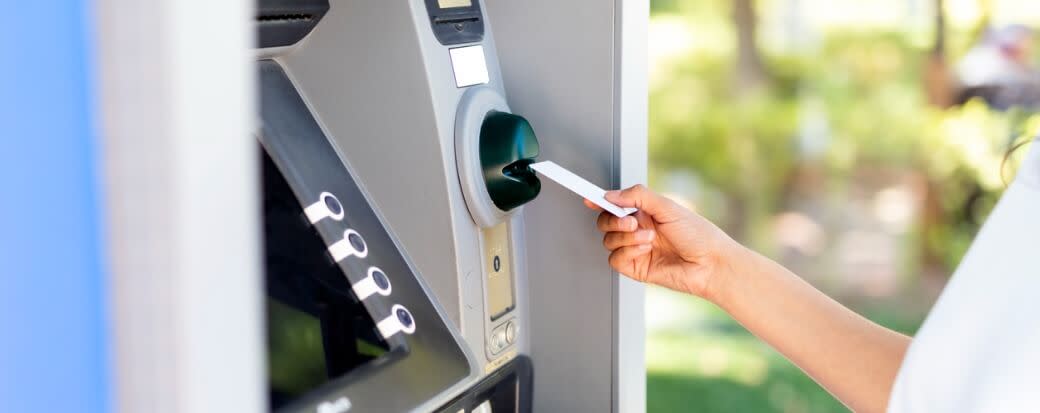ATM Skimming and How to Identify ATM Skimmers

Share this article:
Editor’s note: Lantern by SoFi seeks to provide content that is objective, independent, and accurate. Writers are separate from our business operation and do not receive direct compensation from advertisers or network providers. Read more about our Editorial Guidelines and How We Make Money.
What Is ATM Skimming?
What Do ATM Skimmers Look Like?
Device resting over the original card readers Device may be inserted in the terminal, in the card reader, or along exposed cables Pinhole camera facing keypad or keypad overlay
How to Visually Identify a Skimmer at an ATM
Can Chip Cards Be Skimmed?
How to Prevent Card Skimming
Carefully inspect the keypad and card reader. Look out for any signs of foul play. If it appears the machine has been tampered with in any way, don’t use it. Compare other machines. If the ATM is located by another ATM, check to see how that one looks visually. Does it appear to be in much better condition? Get a baseline for what ATMs should look like when they haven’t been tampered with. Watch out for hidden cameras. Spotting a camera near an ATM machine (not a security camera) can be a sign someone is recording PIN codes. Contact the business hosting the ATM. If something does seem amiss, contact the business where the ATM is located or the ATM owner to report these concerns. Use ATMs in better locations. If there is a choice of where to use an ATM, consumers want to look for one in a high-traffic or well-lit area. Ideally, using an ATM inside of a business or bank branch is safer than using one outside. The harder it is to get away with installing a skimming device, the likelihood that the ATM is safe to use increases.
What to Do if You Think Your ATM Card Has Been Skimmed
Report loss within two days: maximum loss is $50 Report loss from two to 60 days: maximum loss is $500 Report loss after 60 days: Account holder could be responsible for all money taken
The Takeaway
Frequently Asked Questions
Photo credit: iStock/gece33
LNTBNK-Q325-010
About the Author
Jacqueline DeMarco is a personal finance writer and editor based in Southern California. While she spends the bulk of her time writing about complex financial issues, she also tackles a variety of subjects ranging from food to fashion to travel. Her work can be found across dozens of publications such as Credit Karma, LendingTree, Northwestern Mutual, The Everygirl, and Apartment Therapy.
Share this article: